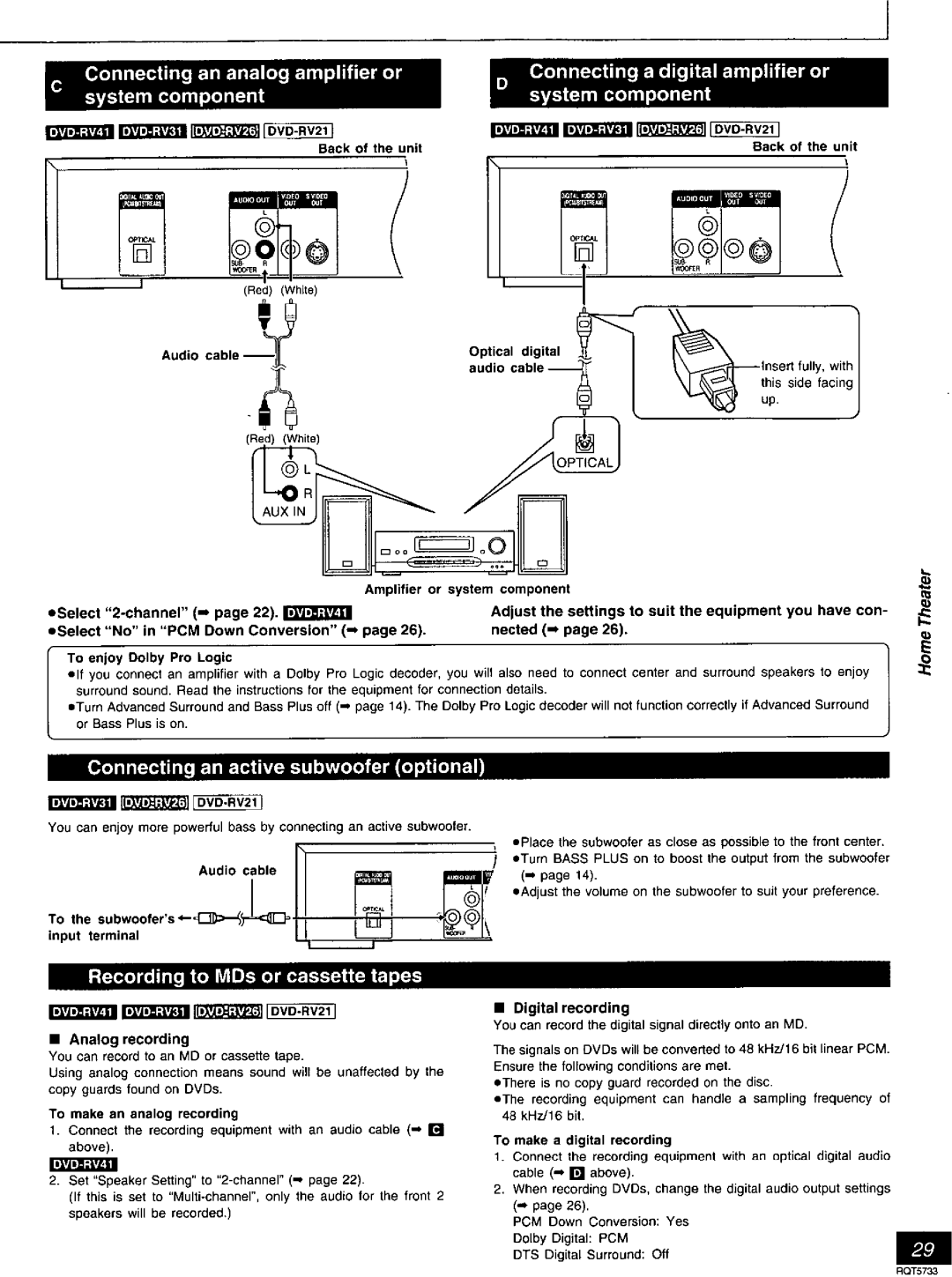
1
_ | I_1 |
| Back of the unit |
|
| Back of the unit |
J | (Red) (White) |
Optical digital
audiolnsert fully, wit_l this side facin
Audio cable _
up j
(Red) {White)
| Amplifier | or system component |
|
• Select | Adiust the settings to suit the equipment | you have con- | |
eSelect | "No" in "PCM Down Conversion" | nected | oj |
oil you connect an amplifier with a Dolby Pro Logic decoder, you will also need to connect center and surround speakers to enjoy surround sound. Read the instructions for the equipment for connection details.
eTurn Advanced Surround and Bass Plus off
To enjoy Dolby Pro Logic or Bass Plus is on.
| - | - |
| |
You can enjoy more powerful bass by connecting an active subwoofer. |
| |||
|
|
|
| • Place the subwoofer as close as possible to the front center. |
| Audio cable |
| ) | oTurn BASS PLUS on to boost the output from the subwoofer |
|
| |||
|
|
|
| |
|
|
|
| oAdjust the volume on the subwoofer to suit your preference. |
To the | subwoofer's*- |
|
|
|
input | terminal |
|
|
|
•Analog recording
You can record to an MD or cassette tape.
Using analog connection means sound will be unaffected by the copy guards found on DVDs.
To make an analog recording
1.Connect the recording equipment with an audio cable
2.Set "Speaker Setting" to
(If this is set to
•Digital recording
You can record the digitalsignal directly ontoan MD.
The signals on DVDs will be converted to 48 kHz/16 bit linear PCM. Ensure the following conditions are met.
oThere is no copy guard recorded on the disc.
eThe recording equipment can handle a sampling frequency of 48 kHz/16 bit.
To make a digital recording
1.Connect the recording equipment with an optical digital audio cable
2.When recording DVDs, change the digital audio output settings
PCM Down Conversion: Yes
Dolby Digital: PCM
DTS Digital Surround: Off
